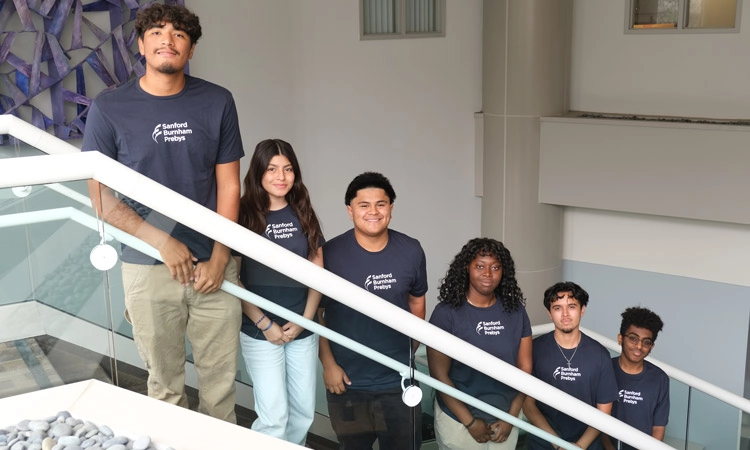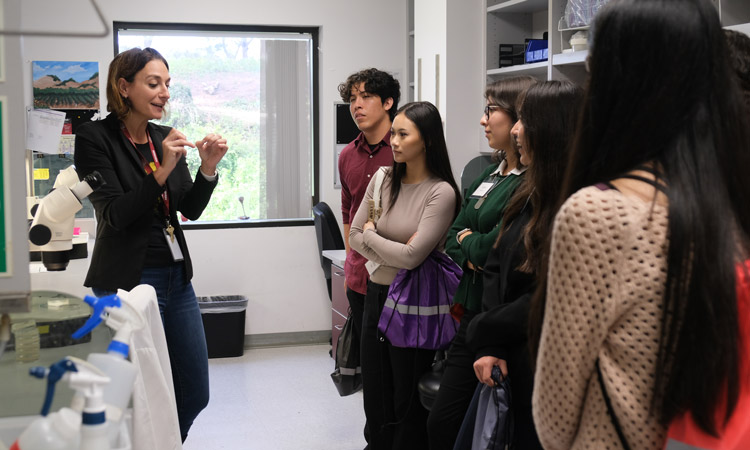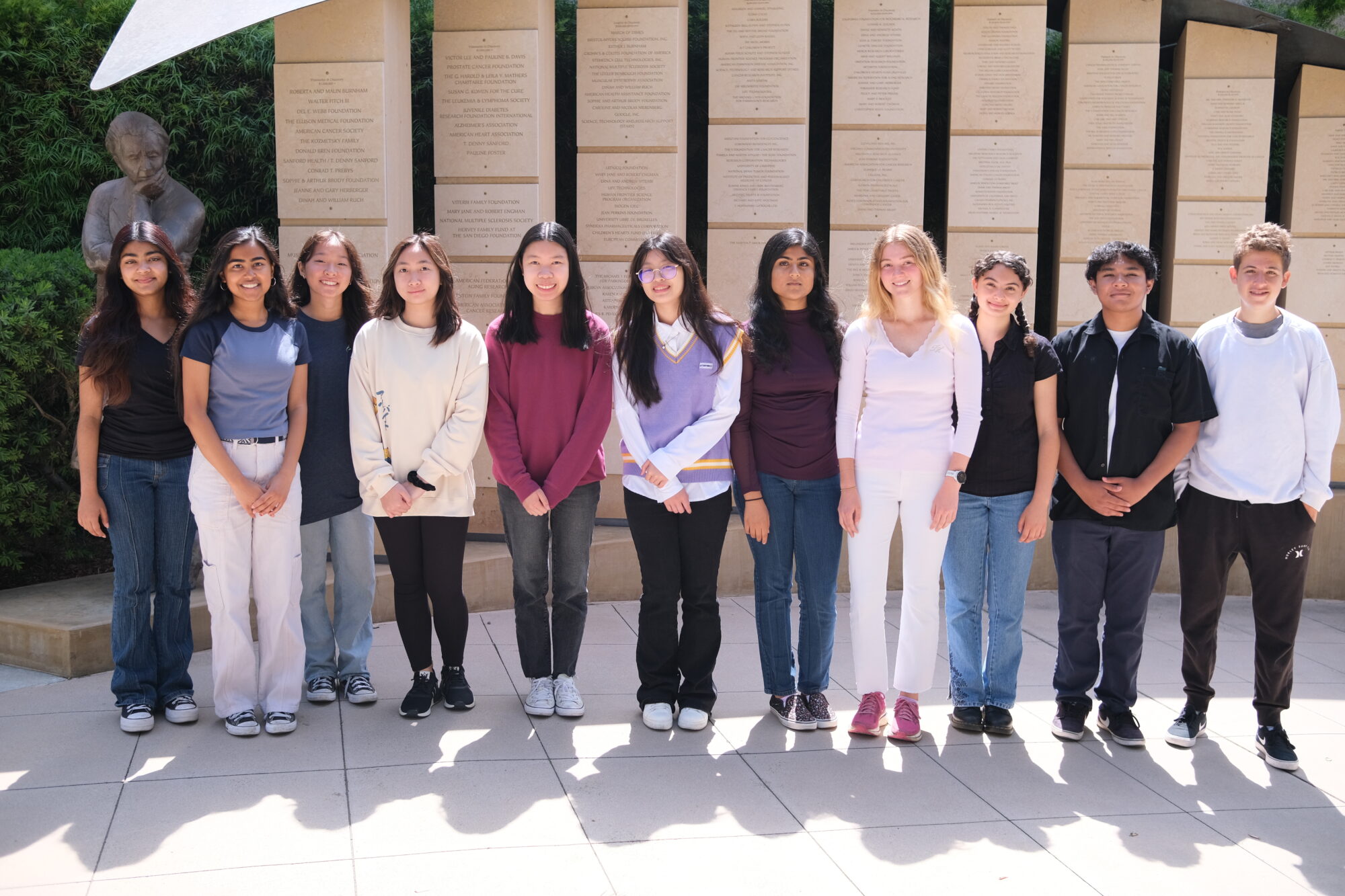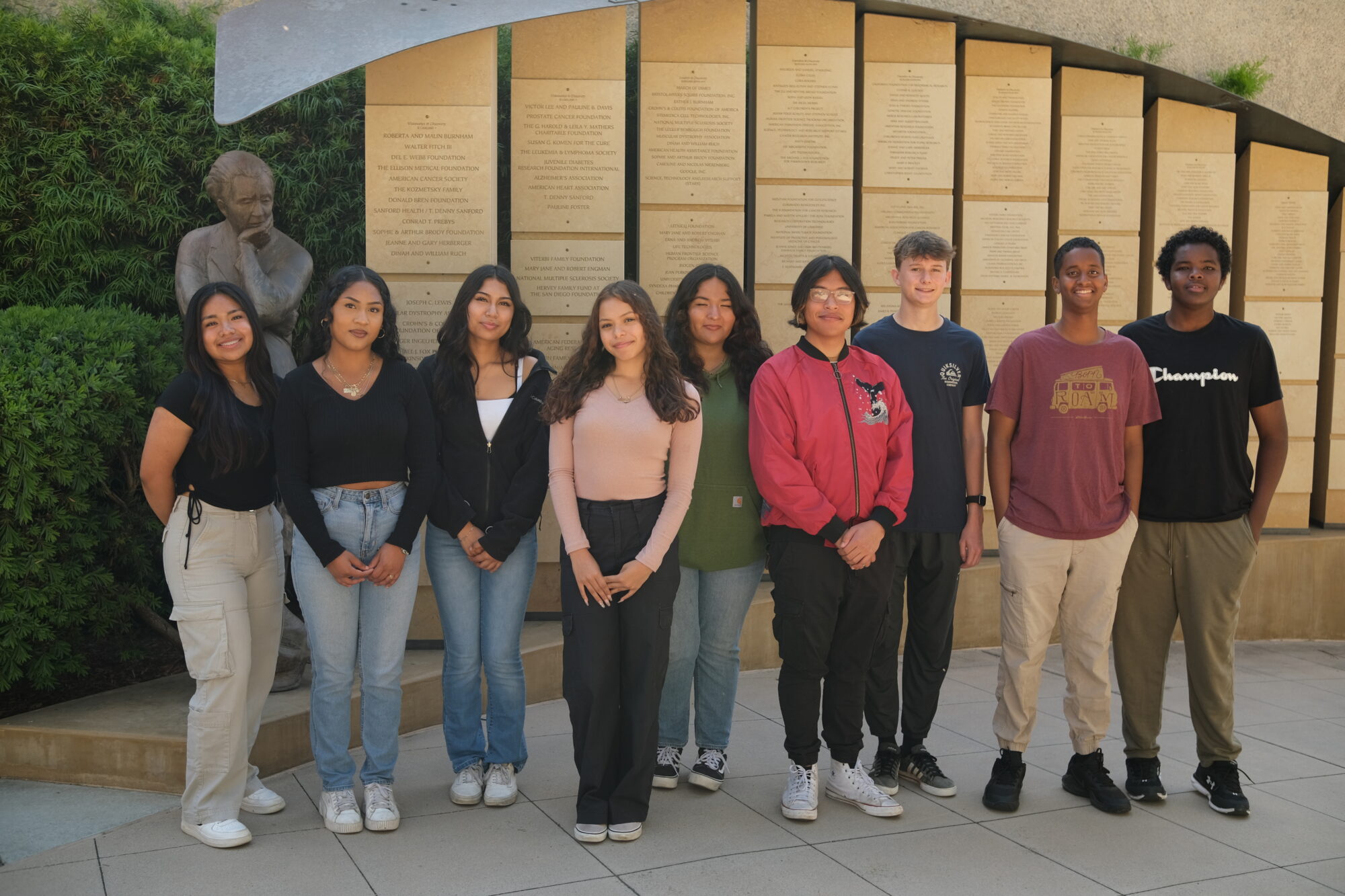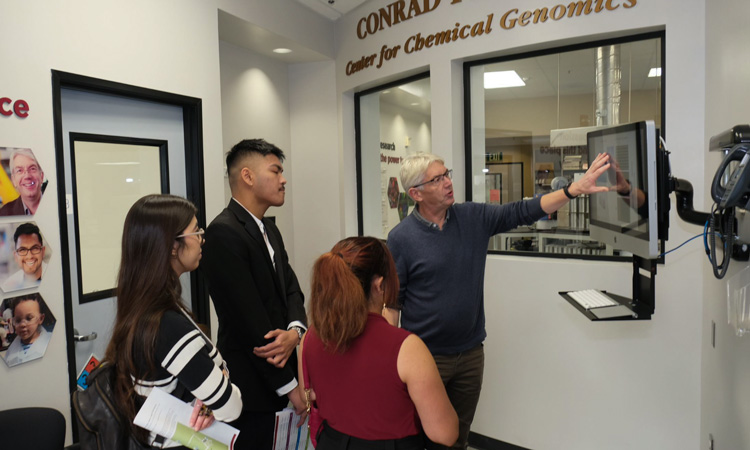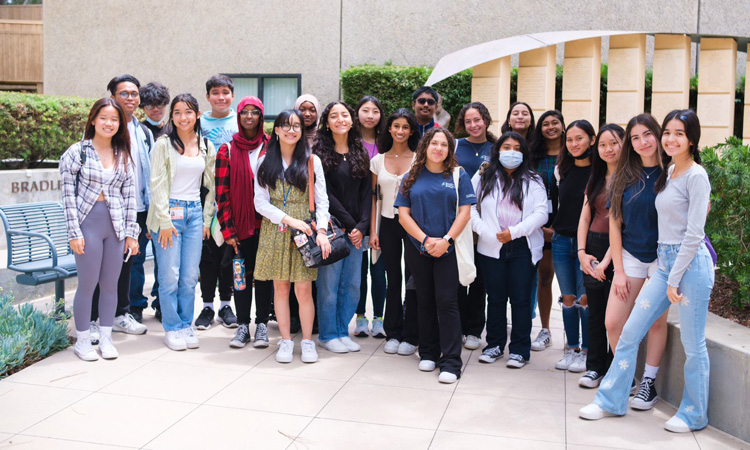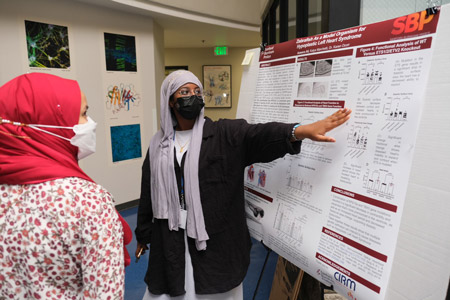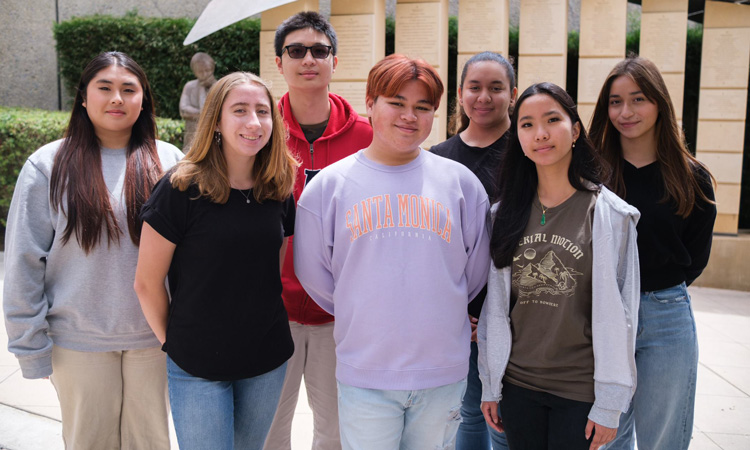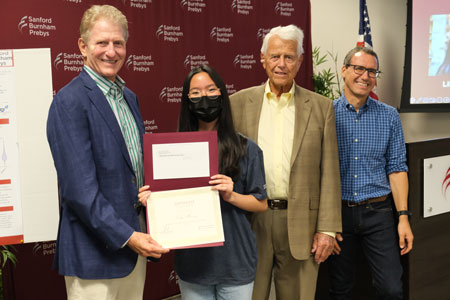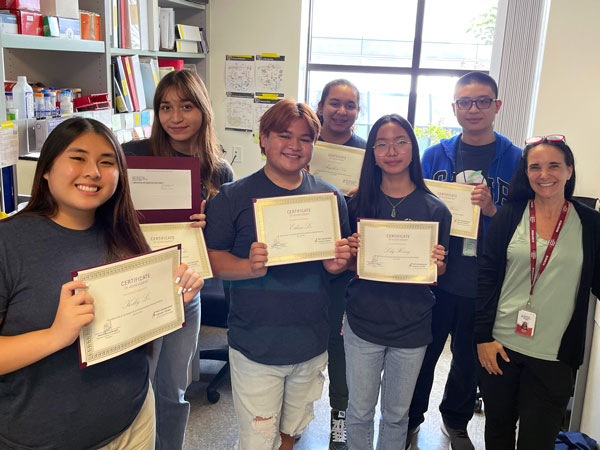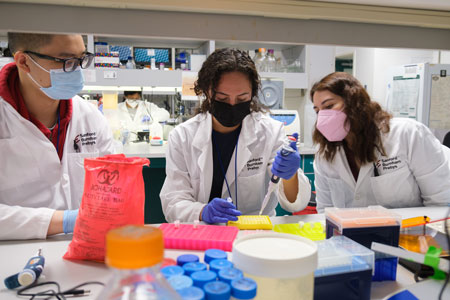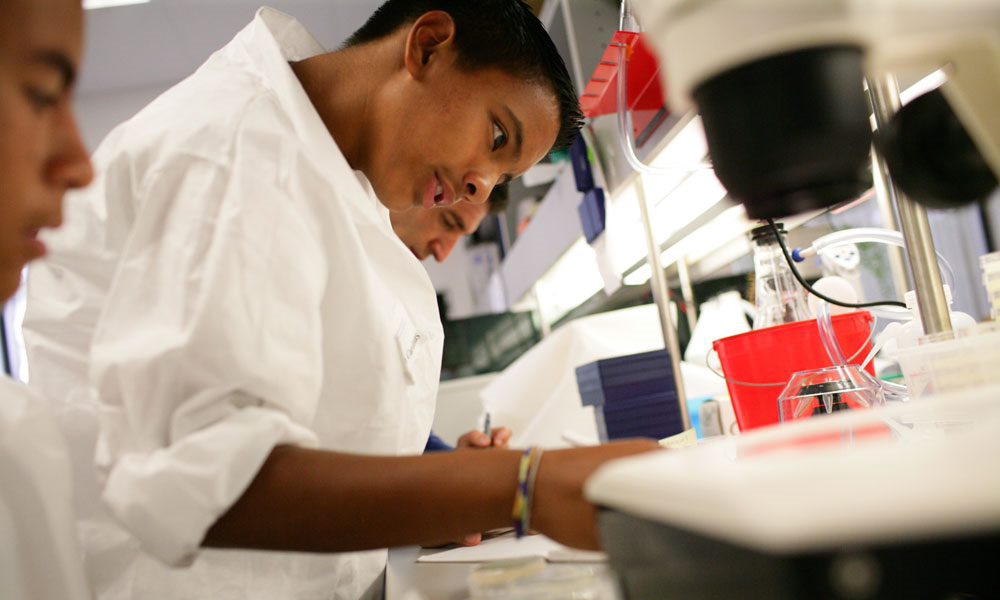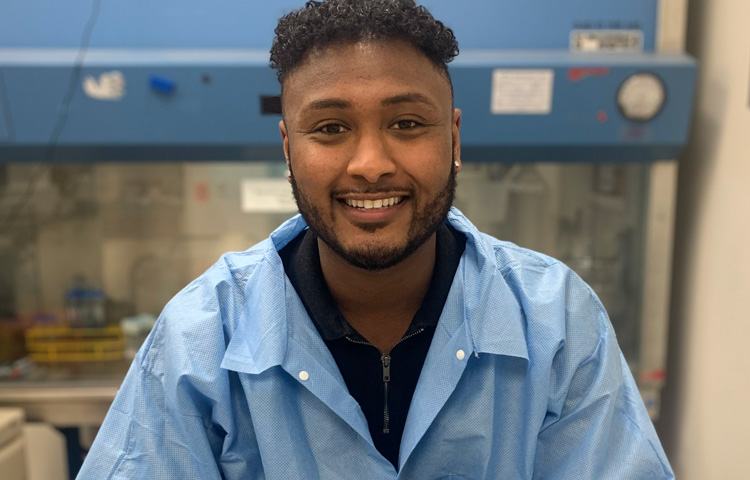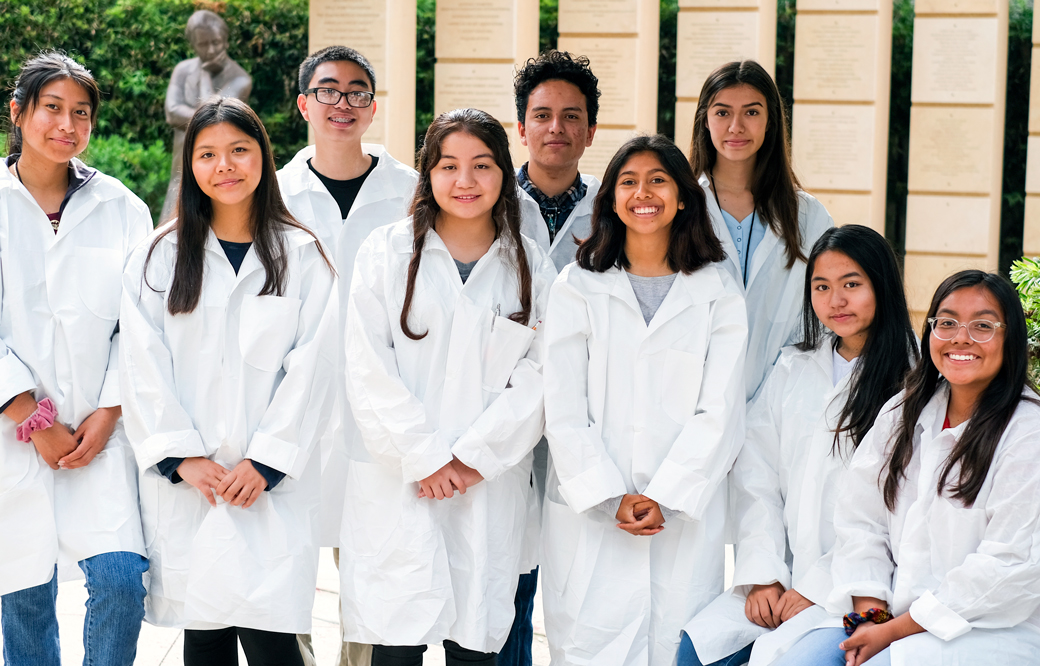Aspiring biomedical researchers and health care professionals spent up to six weeks at Sanford Burnham Prebys participating in meaningful experiments and learning about career opportunities
This summer, Sanford Burnham Prebys welcomed high school students to the Institute to participate in one of two internship programs. One group came from the Preuss School, which is located on the University of California San Diego campus in La Jolla and educates students striving to be first-generation college graduates. Participants in the Preuss internship program gained valuable experience while spending three weeks in Sanford Burnham Prebys laboratories learning research techniques and contributing to ongoing projects. This program is generously funded by Peggy and Peter Preuss, and Debby and Wain Fishburn.
The Institute welcomed its third cohort of interns this year for the Summer Program to Accelerate Regenerative Medicine Knowledge (SPARK). SPARK is an initiative by the California Institute for Regenerative Medicine (CIRM) that provides research opportunities for high schoolers from underrepresented groups throughout California. The SPARK participants completed six-week internships at Sanford Burnham Prebys and completed projects under the supervision of their faculty mentors.
The Preuss and SPARK interns delivered poster presentations at a joint event held on campus on July 26, 2024. The students detailed their projects and what they had learned over the course of their internships.
“I enjoyed the experience and know it will help me in the future,” says Lizeth Villa Bardeles, a Preuss intern who worked in the lab of Sanju Sinha, PhD, an assistant professor in the Cancer Molecular Therapeutics Program. “I also learned that artificial intelligence and computational biology methods are important for the future of biomedical research.”
“The whole internship was super fun,” says Saanvi Dogra, a SPARK intern who worked in the lab of Sanjeev S. Ranade, PhD, an assistant professor in the Development, Aging and Regeneration Program. “I loved being in the lab and trying to get things to work. It really improved my ability to solve problems and confirmed how exciting science can be, and that it could be a great career path for me.”
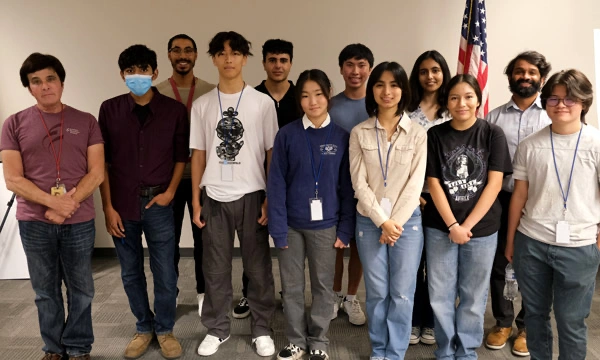
The 2024 SPARK interns with (at left) Evan Snyder, MD, PhD, director of the Center for Stem Cells and Regenerative Medicine and a professor in the Human Genetics Program, and (second from right) Sanjeev S. Ranade, PhD, an assistant professor in the Development, Aging and Regeneration Program.
In addition to working in labs, the Preuss and SPARK interns had other educational opportunities such as conversations with scientists and staff members with a variety of roles supporting research.
“The career talks were really helpful as a way of seeing how many kinds of expertise are needed to run a research organization,” says Fernando Pech, a Preuss intern who worked in the lab of Peter D. Adams, PhD, director of the Cancer Genome and Epigenetics Program. “I believe you can find your passion at Sanford Burnham Prebys, so I would recommend this experience to other students.”
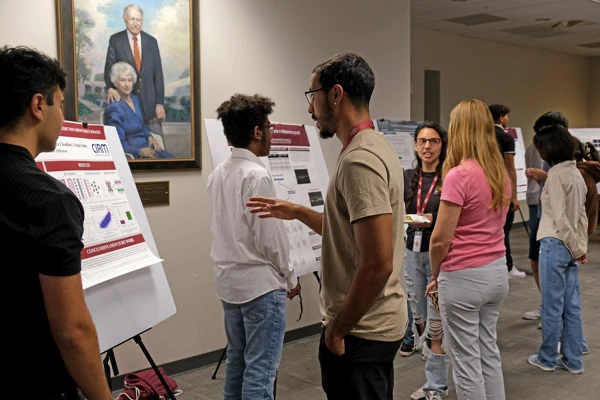
The Preuss and SPARK interns delivered poster presentations at a joint event held on the institute campus on July 26, 2024. The students detailed their projects and what they had learned over the course of their internships.
“I believe this was an outstanding chance for these students to learn if research is a potential career they would like to pursue,” says Donmonique Chambliss, a senior administrator of Diversity, Equity and Inclusion, Education and Training Programs in the Institute’s NCI-designated Cancer Center, and the coordinator of the Preuss internship program.
“These students are amazing,” says Ranade, the director of the SPARK internship program. “They are so motivated already as high school students. They all will go on to do great things, and we’re thrilled that several students are staying on to continue conducting research with their mentors.”
This year’s SPARK internship culminated with a group trip to the University of California Riverside on August 6 for CIRM’s annual SPARK conference, where the participants from Sanford Burnham Prebys presented their work and networked with interns from other institutions across the state.
